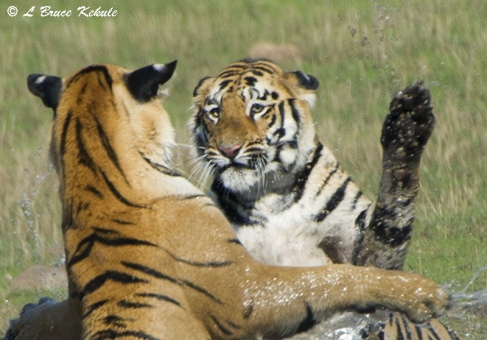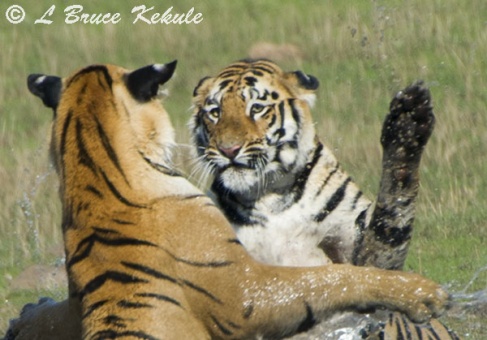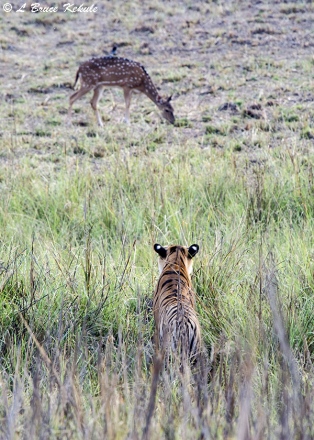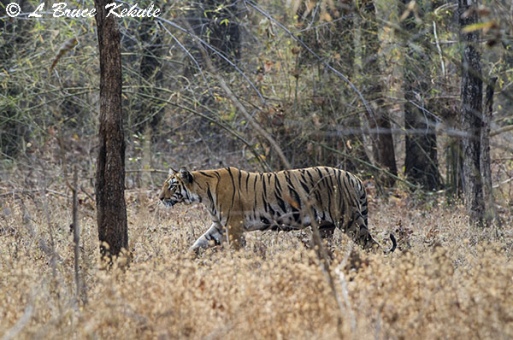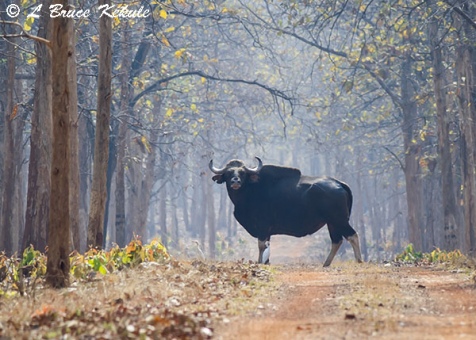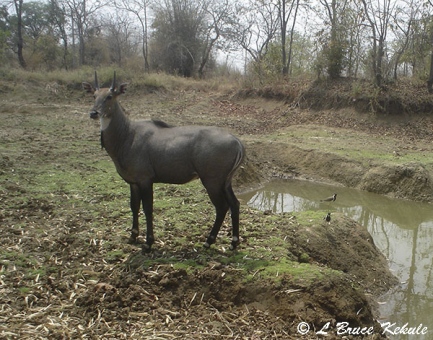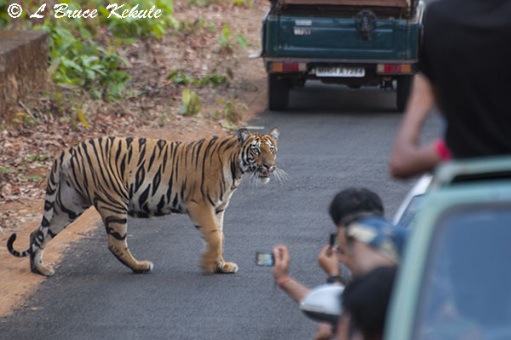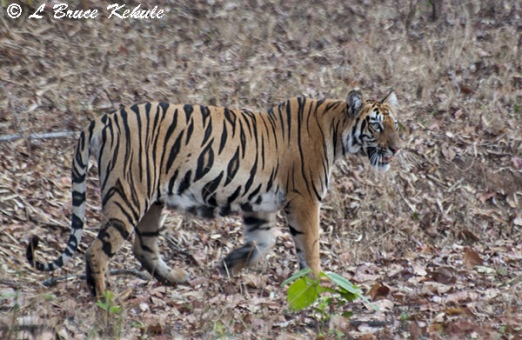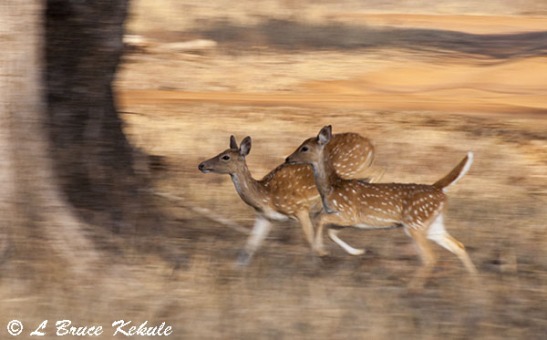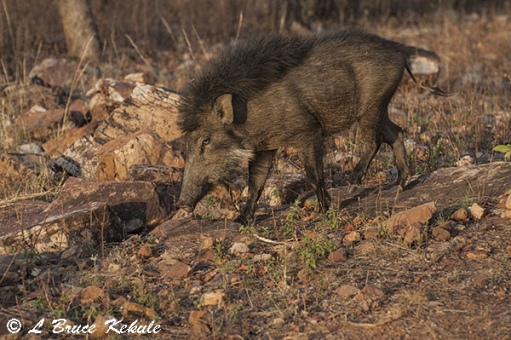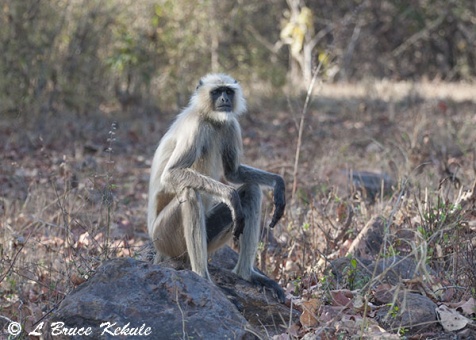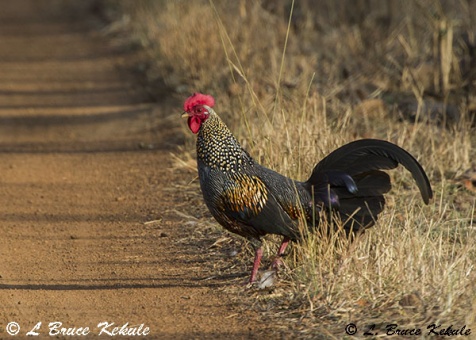Posts Tagged ‘carnivores’
Creatures in Thailand’s Western Forest Complex – Part One
Video footage of Thailand’s rare carnivores including tiger, leopard, bear and wild dog. Most of this footage is recent..!
Tiger Stripes: Identify individual tigers by their stripes and markings
Nature has provided an interesting concept of identifying individuals by certain patterns like tiger stripes, or even human fingerprints for that matter. There are no two individuals alike so one can recognize the same subject in several photographs if the angle is right. I was able to pick-out the same tiger in two photos taken more than a week apart.
Two tiger cubs sparring in the lake at Tadoba.
As most of you know, I recently went to India and photographed some extremely interesting tigers in Tadoba Andhari Tiger Reserve in central India. It was an exciting trip and I got many photographs of the striped predator including jumping tigers in the lake, and close-up roadside portraits plus many more. The cats here pay no attention to the vehicles most of the time and hence, photos are pretty straightforward with the right equipment, right techniques, right timing and some luck I guess.
Tigers sparring up-close.
On the second morning of my safari, a pair of young tiger cubs entered the shallow lake for some fun and cooling off in the morning sun. I had my Nikon D3s and a 200-400mm VRII lens with a 2X converter for 800mm on a monopod and when the action began, I was ready catching the two in mid-air. This shot is probably one of my best ever photographs as a wildlife photographer.
Tiger cub posing by side of the road
Later in the safari near the end, I caught a tiger posing by the side of the road. This female cub is almost mature and about ready to leave the care of her mother and father. She has been roaming by herself more and more recently.
Tiger posing up-close: Note stripe on left cheek.
In the late afternoon on the next to the last day, a whole bunch of jeeps or ‘Gypsies’ as they are called in India were parked waiting on a sleeping tiger. We could not carry-on because the drivers had plugged-up the road so we also parked and waited.
After awhile, a cub got up from her slumber in the bush on the left and crossed the road in front of us. She walked between the cars and an Indian forest official, and then came over to the right side of our jeep and plopped down with her left front paw resting on a rock. I got many photos and some great portraits with loads of behavior and flashing canines.
Imagine my surprise when going through my photos that I was able to distinguish the tiger by the side of the road was the same animal as in the ‘jumping tigers’ shot. After almost a week, this lovely cat came back to bid me farewell and to show me once again, the magnificent beauty of these striped creatures. Also, on how one can recognize individuals by their distinct markings. A perfect ending to the saga of Tadoba Andhari: Land of the Tiger…!
Tadoba Andhari Tiger Reserve – Nine tigers in seven days
A dream come true: Central India’s top protected area for tiger sightings
Tiger sisters sparring in Tadoba Andhari
Same tigers facing off in the lake.
When the tiger evolved in southern China some two million years ago, the species radiated out, north to Siberia and west to the area around the Caspian Sea. The Himalayan mountain range prevented them from moving south into Nepal and India.
Tiger male by the road early one morning.
From China, it moved through Indochina on down the Malay Peninsula via the now submerged Sunda landbridge to Sumatra, Java and Bali in Indonesia. From there the striped cat moved west through Burma to the Indian sub-continent. The Bengal tiger is the second largest after the Siberian species.
A breeding pair in the northern section.
A century ago, there were more than 100,000 tigers throughout their range and India had about 40,000 at that time. Now, it is estimated that maybe 3,200 of these magnificent predators are left in the world with some 2,000 thriving in India and Nepal.
Tiger cub stalking a spotted deer by the lake.
The Indochinese species is just hanging on with about 250 in Thailand and another 250 in Malaysia. Sumatra has about 400 tigers. The Chinese, Caspian, Balinese and Javan tigers are all now extinct, a sad fact!
Tiger cub in the afternoon.
A internet search revealed that there is one protected area that stands above all the others for tiger sightings in India. Tadoba Andhari Tiger Reserve for some time now has been one of India’s most famous for the ease of seeing and photographing the big cat up-close and personal at times. Tadoba was declared a tiger reserve in 1933 and a National Park in 1955.
Bull gaur on the road in the buffer zone.
A buffer zone was recently added and the total area is now 1,700 sq. kilometers. Many other animals are found here including leopard, sloth bear, wild dog, gaur, sambar, chital (spotted deer), nilgai (blue bull), four-horned antelope, muntjac, mugger crocodile plus loads of smaller mammals and birds including the spectacular Indian blue peafowl and the beautiful grey jungle fowl.
Chital stag on the run being chased by wild dogs.
Overlooked by tourist until recently, this forest is situated in central India in the Maharashtra state about 700 kilometers north of Hyderabad. It is split into two parts, north and south. Only 20 percent is now open to the public, and the other 80 percent off-limits to everyone except forest officials after a Supreme Court decision last year in September. The court wanted to close all of the tiger reserves but an outcry from the people was heard and many parks now have only limited access.
Sloth bear near the lake.
Arrangements to travel like visas, air tickets and lodge bookings were arranged and I took off on Thai Airways to Hyderabad on April 4th, arriving at 1:00pm and then undertook a nine-hour taxi ride to the sanctuary. It was scary, to say the least after we got lost in rural India for a short while. The taxi driver finally got back on track and we arrived at the sanctuary at noon.
Wild dogs resting in an evergreen stream bed.
Lunch was served at the Tiger Trails Jungle Lodge situated five-minutes from the front gate of the reserve that would be my home for the next nine days. The food, lodging and service is excellent, and well worth the expense to get there. The closest city is Nagpur only two hours by road and is serviced by daily flights.
Nilgai (Blue Bull) antelope camera trapped near the Tiger Trail Jungle Lodge.
In the afternoon at 3pm, I made my first safari in a ‘Maruti’ jeep (Suzuki) with a naturalist from the lodge, a tour guide and a driver. We got a glimpse of a tiger as the sun was going down. The next day at daybreak, we went south to a lake in the interior. It was reported that four female tiger cubs, and a mother and father were sighted almost everyday in the area.
Tiger cub on the road among the tourists.
We arrived, as did many other jeeps, and we sat in the cool morning waiting for the family to arrive. At 9:30am, the first cub came out of the deep forest across from us and walked past submerging itself in the water to cool off. Then another cub arrived from the other side and they both joined up, and began sparring and facing off. I was ready with my Nikon D3s and a 200-400mm VR lens on a monopod catching the pair in mid-air as seen in the lead photo.
Tiger cub checking out a Tadoba forest official.
The next morning after only five minutes from the gate, we bumped into a male tiger 50 meters from the road out in the open grassland sleeping. Shortly thereafter, he woke up and posed for me. Then we moved to the lake and a cub walked past our jeep about three meters away. We saw tiger everyday except for Tuesday when the park is closed. I however, got a huge gaur bull in the buffer zone next to Tadoba shown here.
Tiger cub emerging after a late afternoon nap.
In the northern section, there is a breeding pair of tigers also shown in the story. They should produce a nice litter that will be an attraction for this place sometime late this year. The four cubs at the lake should disperse very soon. There are many other mature tigers and cubs throughout the sanctuary and at last count, there are about 75 individuals in the park and buffer zone.
Tadoba’s rock pantheons along the road in the tiger reserve.
Tadoba has a rich history that goes back to the 17th century. Once upon a time, dynasties of Gond Kings ruled this part of the Deccan plateau. When the kings traveled through the area, the message of his arrival would be transmitted by an engineering feat. There were rock pantheons erected every hundred yards, which had perfectly aligned tops. Over these were drawn inter-connected ropes which rung a bell at the end. The soldier just tugged on the rope and the bell would ring 50 kilometers away, signaling the approach of his majesty. Many of these rock pillars are still standing seen in the story.
Chital female posing near the road.
Like most things, my safari finally came to a close. I left the lodge at mid-day and dreaded the long taxi ride back to Hyderabad but we eventually arrived at the airport at 9pm. The driver pulled through and got me there in one piece. Then it was a bit of a hassle getting through customs and immigration as security is tight but once through, I had a chance to relax and get something to eat. I boarded the plane for the short three and half hour flight and before I knew it, was home back in Bangkok.
Chital on the run being chased by wild dogs.
India has many problems with poachers and encroachment. Two national parks, Sariska and Panna, had all their tigers poached in a short period of time. As long as there is a market for wildlife parts, the trade in these will continue to carry-on with impunity. However, the government has already reintroduced tigers to these parks but it could take a long time for them to recover fully.
Young sambar stag with tiger claw marks.
Tiger skin, bones, organs and even whiskers are sold in a million-dollar black market to Chinese, Vietnamese and Tibetan buyers. It is heartbreaking that barbaric wildlife traffickers have the audacity to trade the tiger and other animals in bits and pieces, by the gram and kilo.
A mature sambar stag with some serious battle scars.
If you want to see a tiger in the wild, head to India which offers the best opportunities to view the striped predator. There are many tiger reserves and depending on luck, one may bump into one. But Tadoba is at the top of the list for sightings. I definitely will be heading back to this amazing place and hopefully in the near future, more areas will be opened up.
A wild pib in Tadoba.
Unfortunately, Thailand could never offer this wildlife spectacle as the tiger and other Asian creatures have been persecuted for so long making these animals extremely wary which has made sightings rare. But it is still possible in places like Thap Lan and Pang Sida in the northeast, Kaeng Krachan and Kui Buri in the southwest and over in the western protected areas like Sai Yok and Erawan national parks to bump into one.
A gaur in bamboo not far from the road.
I have been working in Huai Kha Khaeng Wildlife Sanctuary for more than 15 years, Thailand greatest tiger sanctuary, and have only seen and photographed one male tiger. However, there are many tigers in this forest (about 75) as witnessed by loads of camera trap photos that have come forth from researchers and wildlife photographers. Needless to say, we need to look after this and other places that have tigers so that these magnificent creatures may continue to thrive into the foreseeable future!
Additional photos from the safari
Langur monkeys are common by the road
A langur posing close to the jeep.
Indian blue peafowl in the bamboo.
Wild boar on the run.
Indian grey mongoose drinking at a waterhole.
Indian grey jungle fowl by the road.
Grey jungle fowl in early morning.



